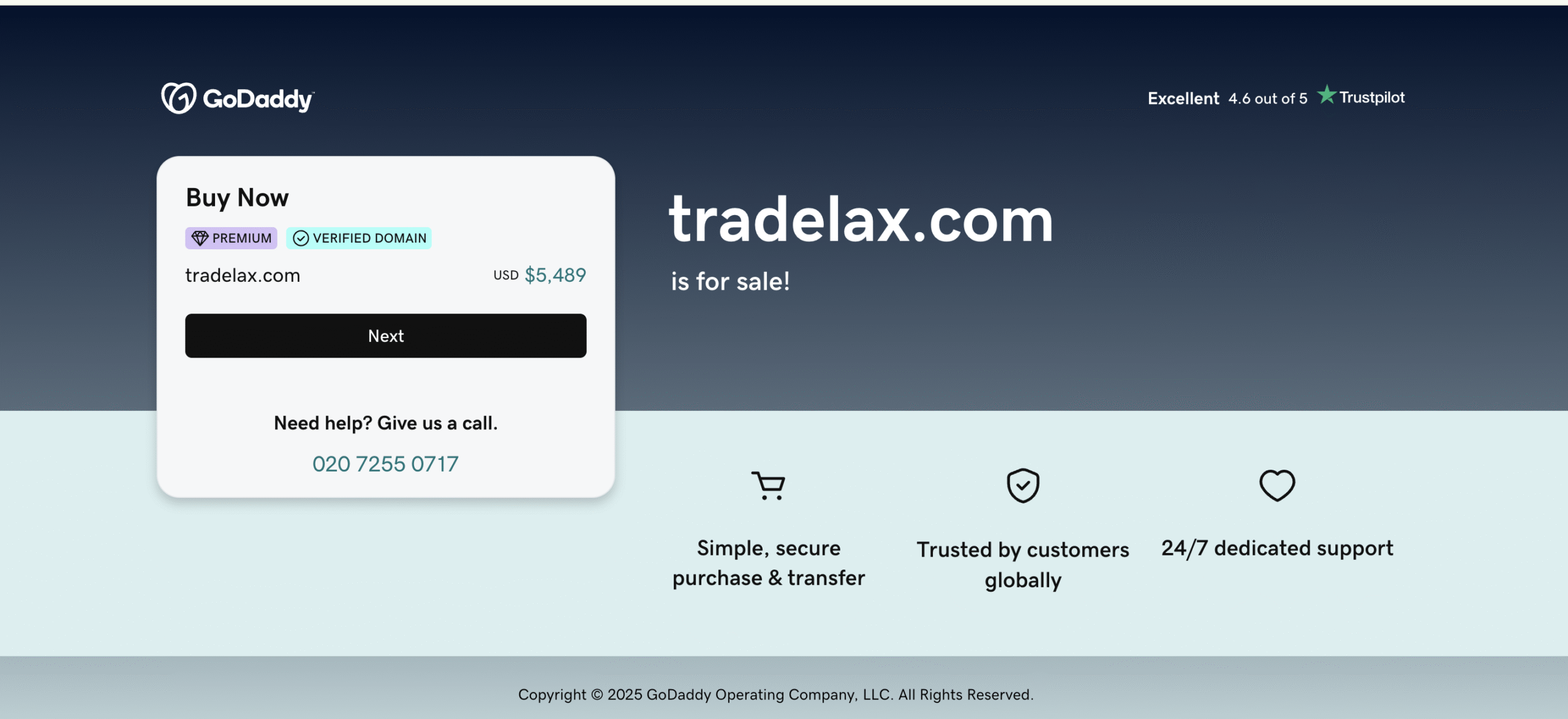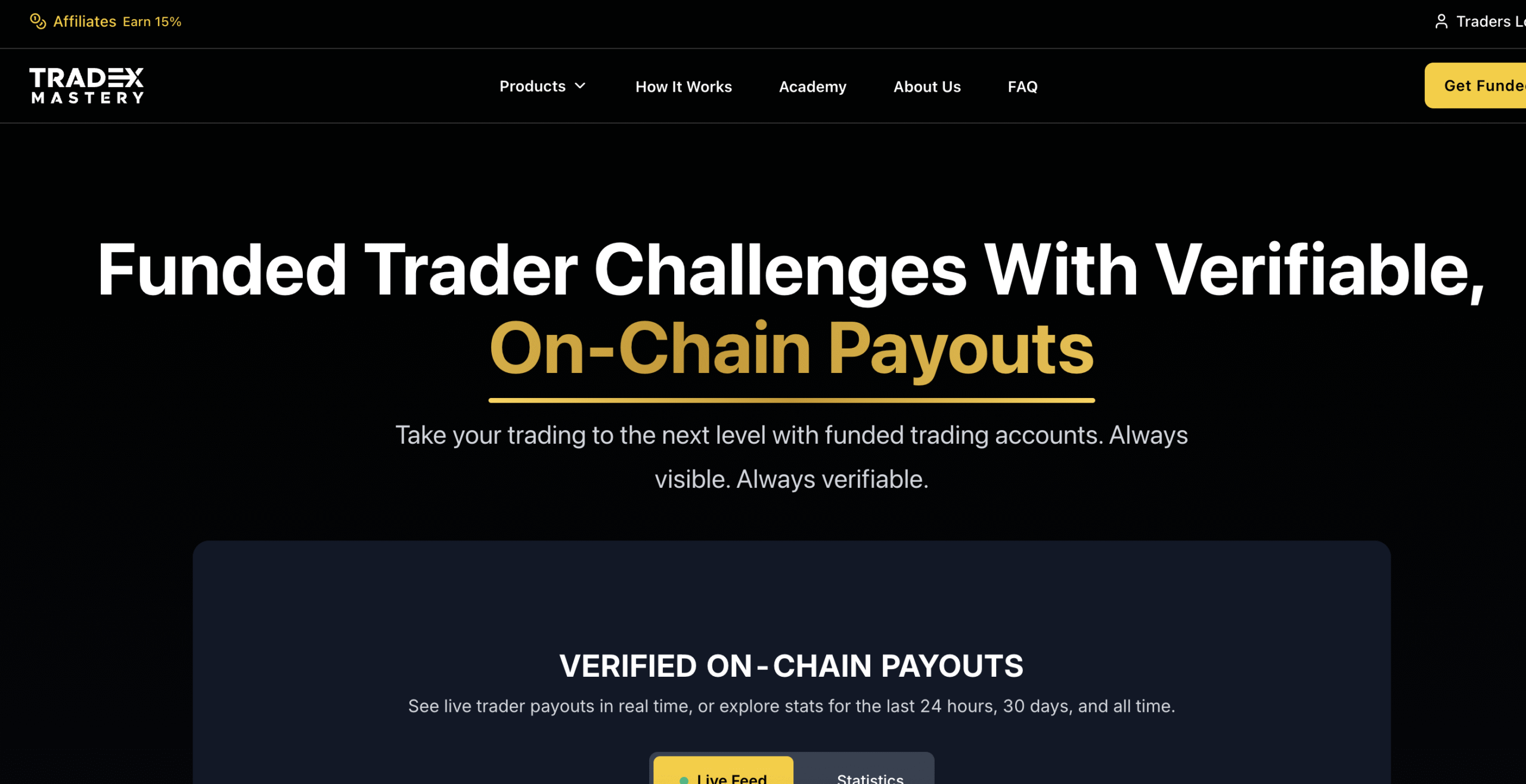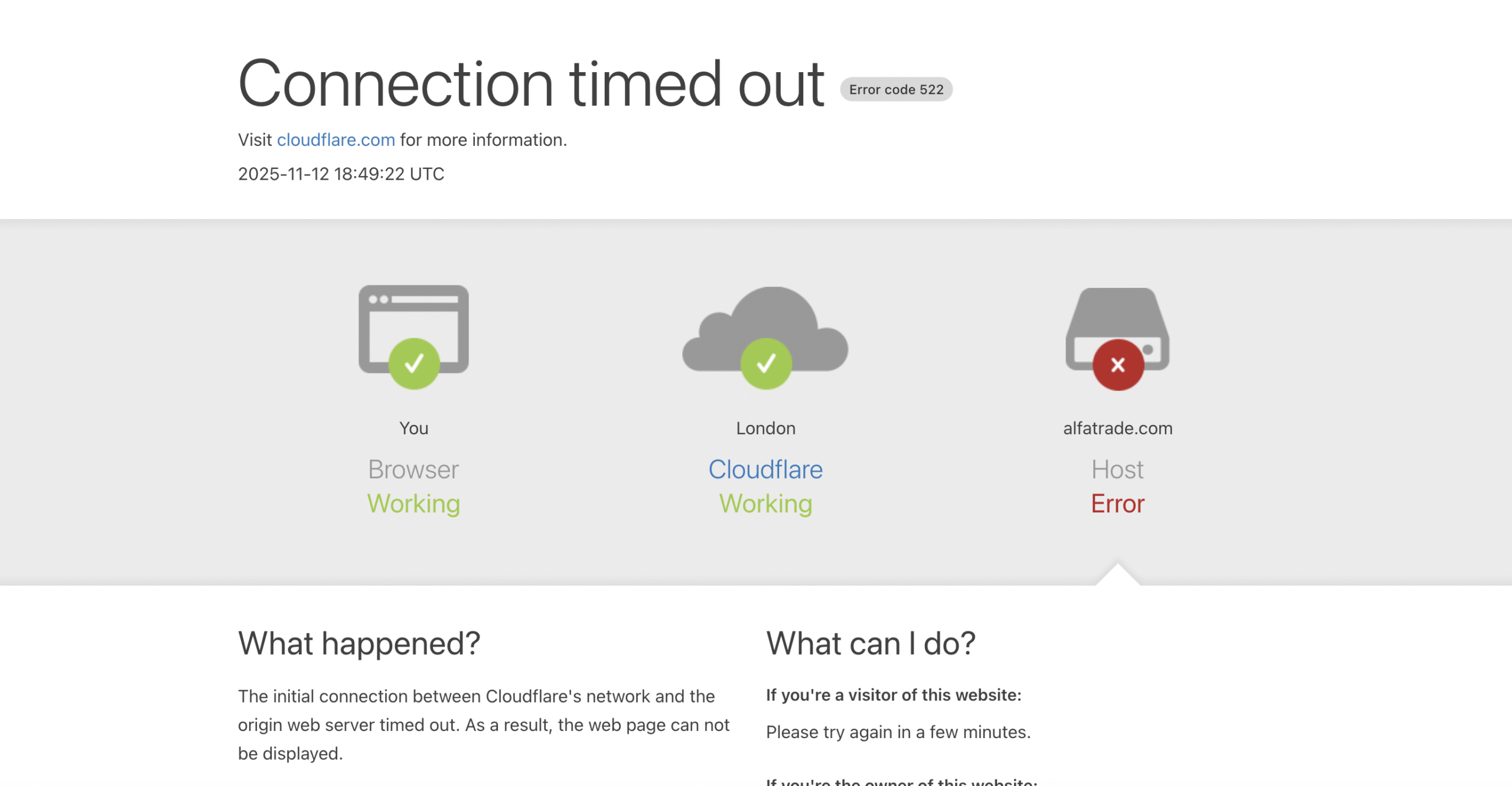Introduction
The internet has created incredible opportunities for investors to trade currencies, cryptocurrencies, commodities, and indices with ease. Unfortunately, it has also opened the door for countless online scams that disguise themselves as legitimate investment platforms. One such operation is Tradelax.com, a platform that presents itself as an online trading broker but has left a trail of financial loss and frustration for many of its users.
This article provides a detailed exposé of Tradelax.com — its background, tactics, red flags, and how unsuspecting investors have been deceived. The goal is to help readers understand how such scams operate, recognize warning signs early, and protect themselves from similar fraudulent schemes.
What Is Tradelax.com?
Tradelax.com is a website that claims to offer trading services across various financial markets, including forex, cryptocurrencies, commodities, and indices. It reportedly began operating around 2020 and presents itself as a high-tech, user-friendly trading environment with features such as personalized account managers and advanced trading tools.
At first glance, the platform appears legitimate. Its website looks professional, and it uses industry buzzwords such as “real-time trading,” “financial independence,” and “high-profit potential.” It promises investors easy account creation, expert guidance, and consistent profits.
However, beneath this polished appearance lies a network of deceit. Numerous users have reported being unable to withdraw their funds, being pressured to deposit more money, and losing all contact with the platform once they requested withdrawals.
The Tradelax.com Business Model: Too Good to Be True
Tradelax.com markets itself as a broker that makes trading accessible to everyone, regardless of experience level. They often lure investors through online ads or social media promotions offering “guaranteed profits” or “risk-free returns.” Once a user shows interest, they are contacted by so-called account managers who claim to be professional financial advisors.
The structure typically works as follows:
-
Initial Contact – Victims are often approached via online advertisements or cold calls promising lucrative investment opportunities.
-
Small Entry Deposit – New users are encouraged to start with a small amount, often around $250, to “test the platform.”
-
Fake Profits – After a short time, the account appears to show profits. These numbers are usually fabricated by the platform to gain the victim’s trust.
-
Pressure to Invest More – The assigned account manager encourages the user to invest larger sums to “increase profits” or “upgrade the account.”
-
Withdrawal Problems – Once the user tries to withdraw funds, the problems begin. They are told to pay additional fees, taxes, or deposits to unlock their funds. These are just excuses to extract more money.
-
Disappearance – Eventually, communication stops altogether, and the website or contact person becomes unreachable.
By the time victims realize what happened, their money has already been transferred offshore or converted into untraceable forms like cryptocurrency.
Major Red Flags
Every legitimate broker is transparent about its operations, licensing, and regulation. Tradelax.com fails on all these fronts. Below are the main warning signs that reveal why it’s almost certainly a scam.
1. No Regulation or License
One of the clearest indicators of a fraudulent trading company is its lack of regulation. Tradelax operates without authorization from any recognized financial regulatory body. There is no evidence of registration with reputable agencies like the Financial Conduct Authority (FCA), the Australian Securities and Investments Commission (ASIC), or the Cyprus Securities and Exchange Commission (CySEC).
An unregulated broker can operate freely without oversight, meaning clients’ funds are completely unprotected. If the company decides to disappear overnight, there are no authorities to hold it accountable.
2. Fake Address and Offshore Setup
Tradelax claims to be based in offshore locations such as St. Vincent and the Grenadines — a notorious hotspot for fraudulent brokers. These jurisdictions have minimal regulatory frameworks, which makes it nearly impossible to pursue legal action against companies registered there.
Often, the physical address provided by such brokers is either fake or belongs to a shared office building used by dozens of other shell companies. This lack of verifiable presence is a common tactic used to mask the true identity of the people running the operation.
3. Manipulative Sales Tactics
Many users have reported that once they registered an account, Tradelax.com’s so-called account managers bombarded them with phone calls, emails, and even WhatsApp messages. These individuals are highly trained in persuasion and use psychological pressure to convince victims to invest more money.
The tactics include:
-
Offering “limited-time investment opportunities.”
-
Claiming that bigger deposits unlock “higher-return tiers.”
-
Insisting that withdrawing early would “forfeit profits.”
-
Guilt-tripping investors by saying they’re “missing out” or “not trusting the process.”
The goal is always the same: to push the investor into depositing as much money as possible before cutting off contact.
4. Fake Trading Platform
Unlike legitimate brokers who use verified trading software such as MetaTrader 4 or MetaTrader 5, Tradelax operates on a proprietary, browser-based system. This allows the scammers to fully control what the user sees.
The supposed trades, balances, and profits displayed on the platform are often completely fabricated. The user may think they are making successful trades, but in reality, no trading ever takes place. The numbers are just visual illusions designed to gain trust and encourage further investment.
5. Withdrawal Denials and Excuses
The most consistent complaint from Tradelax.com users is the inability to withdraw funds. Victims describe a series of stalling tactics:
-
Being told their withdrawal request is “under review.”
-
Being asked to pay a “tax” or “processing fee” to access funds.
-
Having accounts suddenly “suspended for verification.”
-
Being ignored entirely after making repeated requests.
In legitimate financial platforms, withdrawals are usually processed within a few business days without hidden conditions. Tradelax’s refusal to release funds is one of the strongest proofs that it operates fraudulently.
6. Fake Identities and Disappearing Agents
Scam brokers often use fake names and identities for their staff. Victims report that after weeks of communication, the “account manager” who handled their portfolio suddenly vanishes, and emails bounce back. Calls go unanswered, and the website chat stops working. When one scam agent disappears, another may reach out pretending to be from a “compliance department” to extract even more money.
User Experiences and Complaints
Tradelax’s online reputation is overwhelmingly negative. Numerous investors have shared stories of losing their savings to this platform. The complaints follow a similar pattern:
-
A small initial investment seemed successful.
-
The platform displayed fake profits to create trust.
-
The account manager urged them to invest more.
-
Withdrawal requests were delayed, denied, or required additional payments.
-
Eventually, all communication ceased, and the funds were lost.
These consistent reports make it clear that Tradelax follows the same operational model as many online investment scams that use psychological manipulation and deceitful tactics to extract as much money as possible from victims.
Why Tradelax.com Persists Despite Warnings
You might wonder why such a blatant scam continues to operate. The answer lies in the structure of the internet and the use of offshore jurisdictions. Scam brokers like Tradelax.com often change their domain names, rebrand, or create new websites under different names once negative reviews accumulate.
They exploit the fact that most victims are from multiple countries, making it hard for any single authority to take decisive action. Additionally, once payments are made through international transfers or cryptocurrencies, tracking the funds becomes extremely difficult.
The Psychology Behind the Scam
To fully understand how Tradelax.com succeeds in deceiving people, it’s useful to examine the psychological manipulation involved.
1. Trust Building
Scam brokers assign “account managers” who initially appear professional, courteous, and knowledgeable. They take time to explain trading strategies and even help victims navigate the platform. This false professionalism builds a sense of trust and legitimacy.
2. The Illusion of Control
By showing false profits, the platform gives investors the illusion that they are in control of their money and capable of growing it. Seeing positive numbers on a trading screen makes it psychologically harder to walk away.
3. Fear of Loss
Once the victim has deposited a significant amount, the scammers use fear to prevent withdrawal attempts. They claim withdrawing early will “reset the account,” “cause penalties,” or “reduce profit potential.”
4. Greed and Hope
Human emotion plays a big role. When people see what looks like profits, they become hopeful and want to believe they have found a shortcut to financial success. Scammers exploit this optimism until it’s too late.
The Aftermath for Victims
The emotional and financial impact of scams like Tradelax.comcan be devastating. Victims often describe feelings of guilt, shame, and embarrassment. Many have lost not just their investments but also life savings and retirement funds.
The experience can lead to severe emotional distress, including anxiety and depression. Unfortunately, these scams prey on trust and hope — qualities that are hard to rebuild once lost.
How to Identify a Scam Broker
The story of Tradelax.com offers valuable lessons for anyone considering online investments. Below are signs that can help you spot a scam before it’s too late:
-
Lack of Regulation – Always verify if a broker is licensed by an official authority.
-
Unrealistic Returns – Promises of high profits with little or no risk are classic scam indicators.
-
Vague Company Information – Genuine brokers display clear company registration details and addresses.
-
Pressure to Deposit More – Reputable brokers never pressure you to invest beyond your comfort zone.
-
Withdrawal Issues – If a broker delays or blocks withdrawals, that’s a serious red flag.
-
Poor Online Reputation – Check independent review platforms for complaints.
-
Unprofessional Communication – Overly aggressive sales tactics and broken English are common among fraudulent brokers.
Why Regulation Matters
Regulation exists to protect investors. Licensed brokers must follow strict rules, including segregation of client funds, transparent fee structures, and dispute resolution mechanisms. When a broker operates without such oversight — as Tradelax does — there is no legal protection for investors.
Regulated brokers are also subject to regular audits and compliance checks. Scam operations, by contrast, can manipulate prices, fake trades, and deny withdrawals without consequence. Choosing an unregulated broker effectively means trusting your money to an anonymous stranger.
The Broader Impact of Online Broker Scams
Platforms like Tradelax.com don’t just hurt individual investors — they also damage the credibility of the entire online trading industry. They create distrust toward legitimate brokers and hinder the growth of ethical financial services.
Moreover, scam brokers often recycle their websites under new names once exposed. It’s common for the same individuals to run multiple fake trading platforms simultaneously. These scams cost the global economy billions of dollars each year.
Lessons Learned from the Tradelax Case
The Tradelax case highlights several essential truths:
-
Professional-looking websites can still be fake. Design and marketing do not equal legitimacy.
-
Lack of regulation is the biggest warning sign. Always verify credentials before depositing.
-
Scammers rely on emotions. They exploit greed, hope, and fear to manipulate victims.
-
Communication tactics are consistent. All scam brokers use similar scripts — promising quick wealth and easy withdrawals.
By recognizing these patterns, you can protect yourself and others from falling victim to similar schemes.
Final Verdict: Tradelax Is a Scam
After examining all the evidence, there is no doubt that Tradelax is a fraudulent and unregulated trading platform. Its deceptive practices, pressure-based sales tactics, and repeated withdrawal failures expose it as a classic investment scam.
Tradelax exists solely to take investors’ money under the pretense of providing trading services. It has no legitimate business model, no regulatory approval, and no intention of delivering on its promises. Any interaction with this platform carries a near-certain risk of financial loss.
Conclusion
Tradelax.com serves as a powerful warning for investors in the digital age. The platform demonstrates how easily scammers can create the illusion of a trustworthy financial service using slick marketing, persuasive agents, and fabricated trading interfaces.
In reality, Tradelax offers nothing but lies, manipulation, and stolen funds. The key takeaway is simple: never invest with an unregulated broker, no matter how convincing their pitch may sound.
By doing proper research, verifying licenses, and exercising skepticism toward “too-good-to-be-true” offers, investors can avoid becoming victims of online trading scams like Tradelax.
Stay cautious, stay informed, and remember — legitimate opportunities never rely on secrecy, urgency, or pressure.



